The Intel Core i3-7350K (60W) Review: Almost a Core i7-2600K
by Ian Cutress on February 3, 2017 8:00 AM ESTTotal War: Attila
The Total War franchise moves on to Attila, another The Creative Assembly development, and is a stand-alone strategy title set in 395AD where the main story line lets the gamer take control of the leader of the Huns in order to conquer parts of the world. Graphically the game can render hundreds/thousands of units on screen at once, all with their individual actions and can put some of the big cards to task.
For low end graphics, we test at 720p with performance settings, recording the average frame rate. With mid and high range graphics, we test at 1080p with the quality setting. In both circumstances, unlimited video memory is enabled and the in-game scripted benchmark is used.
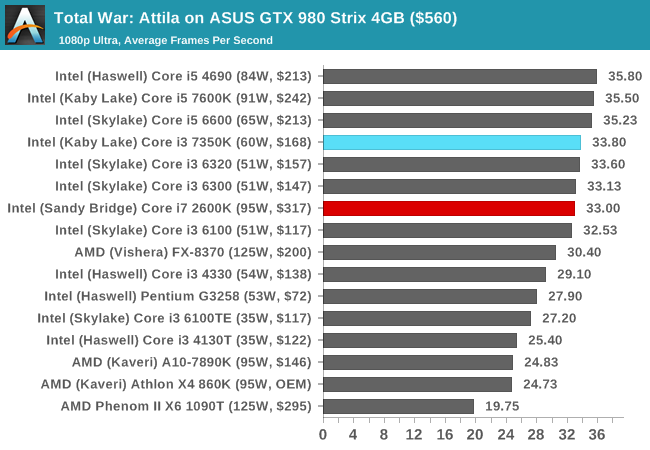
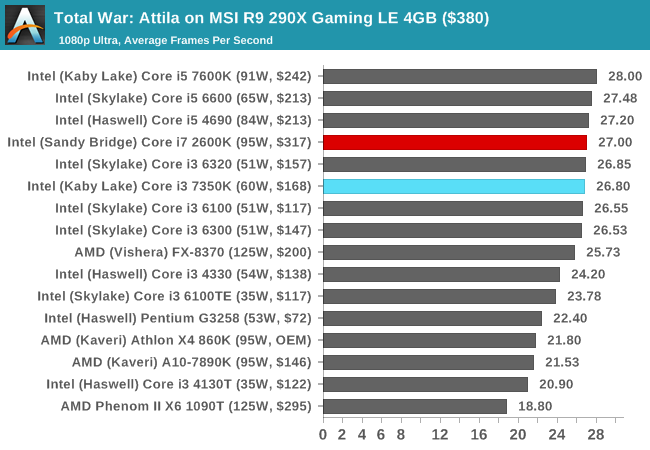
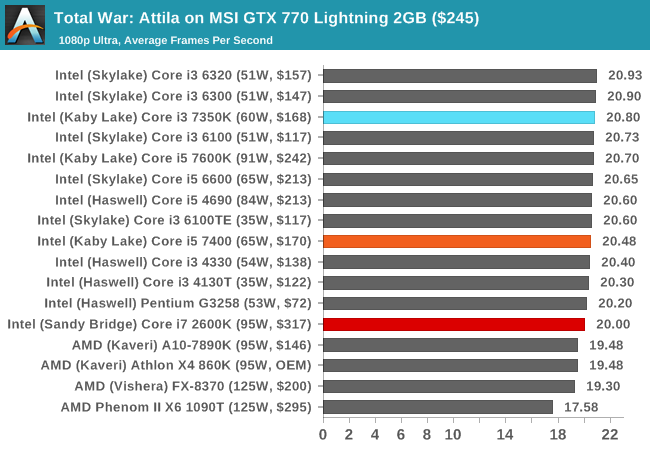
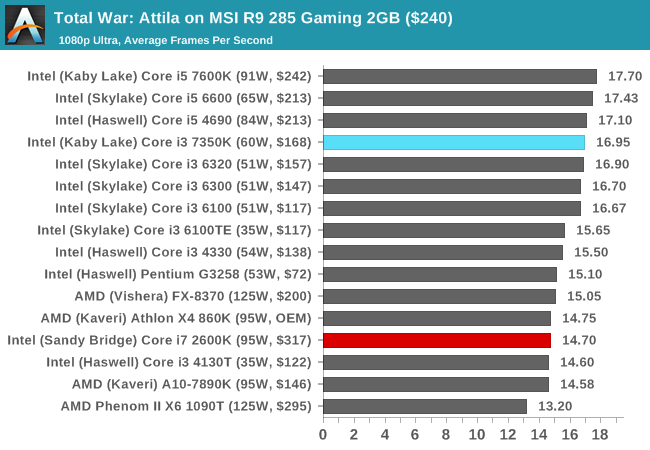
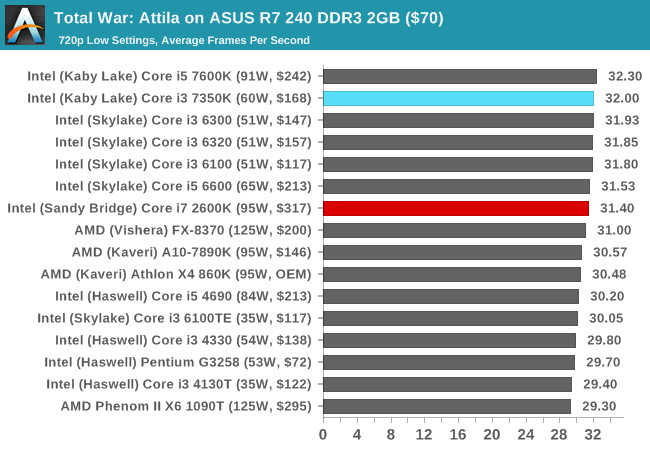
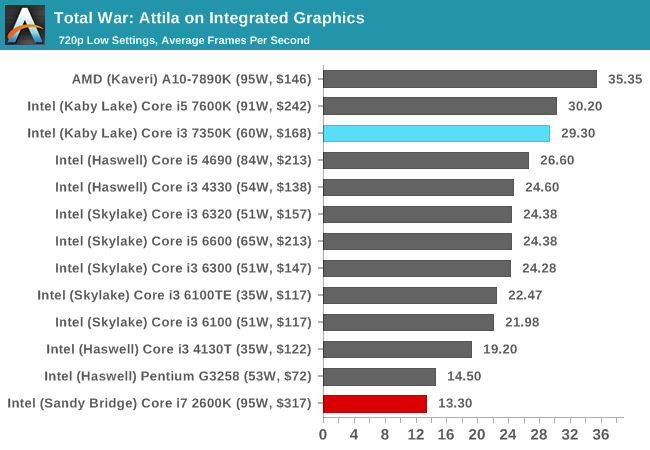
Similar to Alien Isolation, the only discrete GPU there seems to be much of a difference between the i3 and i7 is on the R9 285, where the newer microarchitecture has the advantage. The integrated graphics in Sandy Bridge were laughable, and the Core i3 offers over double the performance here.











186 Comments
View All Comments
Gich - Friday, February 3, 2017 - link
Sure, it's progress... but it used to be much more, much faster... so it doesn't feal progress anymore.StrangerGuy - Friday, February 3, 2017 - link
Things I learned:1. 7350K is hilariously overpriced versus a G4560.
2. Overclocking stock 4.2GHz Intel parts that are already so far from the freq/power sweet spot and little headroom that it's mostly a exercise in futility.
3. That i5 7400 is crazy power efficient.
jaydee - Friday, February 3, 2017 - link
Regarding point #3.It makes you wonder what the "T" designation is really all about. Is the i5-7600T @2.8 - 3.7GHz (35W), basically the same thing as the i5-7400 (65W), only difference being they downclocked the base 200 MHz and upclocked the turbo 200 MHz. On paper you'd expect the "T" to be way more power efficient, but in actuality I bet they are about the same.
Dr. Swag - Friday, February 3, 2017 - link
Hey Ian, correct me if wrong, but couldn't you have just downclocked a 7600k to "simulate" an i5 7400? Afterall, the cache is the same so it should be the same except for the TDP...fanofanand - Friday, February 3, 2017 - link
That would produce a ton of new variables though, i7's theoretically have gone through more exhaustive binning and are a "higher quality" chip that should be able to operate at higher frequencies with lower voltage. Should being an important caveat there.snarfbot - Friday, February 3, 2017 - link
i think microcenter was selling 2600k's for 230 bucks. so 6 years later and you get this pos. progress.fanofanand - Friday, February 3, 2017 - link
MicroCenter has long been offering sweetheart mobo + cpu deals, including the 7700K, so I'm not sure what you think you are proving with your comment. Go look at this processor with a mobo at MicroCenter and you tell me what you see.CaedenV - Friday, February 3, 2017 - link
2600 was $230, 2600k was $280I only know because I didn't sleep for a week while I made the decision lol. Ended up with the 2600 non-k because it still boosted to 4.2GHz just fine and that was more than enough horsepower for me. Been using it for 6 years... omg... how is there no clear upgrade yet?
SaolDan - Friday, February 3, 2017 - link
Excellent!Mr Perfect - Friday, February 3, 2017 - link
Wouldn't testing on Windows 10 have changed the results in favor of the i3 a little? It can't use it's Speed Shift v2 in Windows 7.